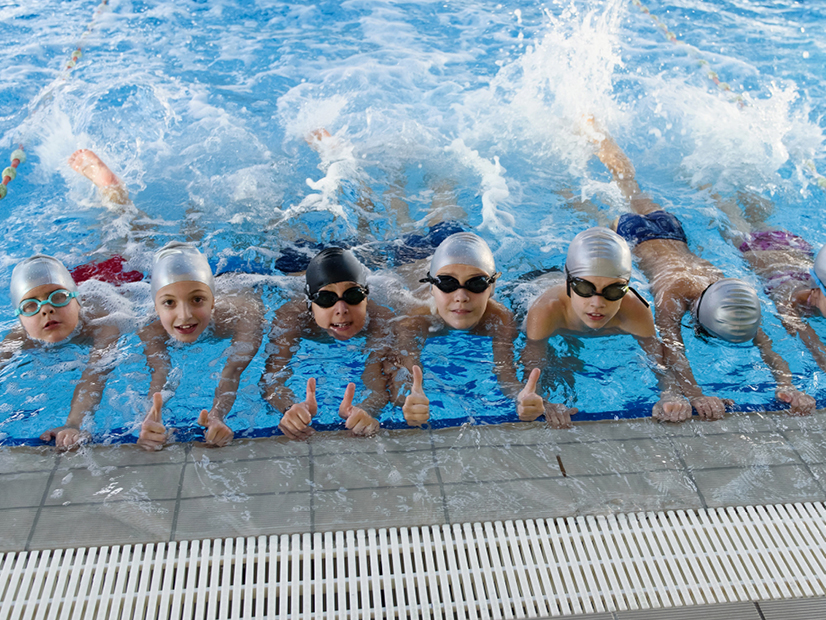One of the most common questions we receive from parents and guardians is: “How many swimming sessions per week should my child attend?” While this seems like a straightforward question, the answer can be quite complex. The number of sessions is influenced by various factors, including a child’s background in swimming, their stage of physical and mental development, other weekly activities, and their level of commitment to the sport.
Below, we’ll explore these factors and provide guidelines for different levels of weekly training.
1 Session per Week
For children who attend one swimming session per week, this serves as a gentle introduction to squad swimming. It offers a chance to gradually develop swimming skills while socializing with peers and receiving personalized coaching. The primary benefit of this schedule is the opportunity for children to familiarize themselves with the water, learn basic swimming techniques, and build comfort and confidence in a low-pressure environment.
However, with only one session per week, the rate of improvement in technique and endurance may be slower. The limited pool time can make it challenging for children to fully refine their strokes and develop the muscle memory needed for efficient swimming. As a result, the progress might be incremental, which is perfectly fine for those who view swimming as a casual activity or supplement to other sports.
Parents who opt for this schedule often do so to expose their children to swimming without overwhelming them, especially if the child is already committed to other activities. This approach can be a great way to maintain a balanced lifestyle, ensuring that the child has time for other interests and pursuits. Just remember that skill development and improvement will be slow with only swimming one session per week.
2-3 Sessions per Week
A more common choice for families is enrolling children in two to three swimming sessions per week. This schedule strikes a balance between recreational swimming and more serious training. With regular practice, children have the opportunity to make noticeable improvements in technique, develop friendships, improve endurance, and overall fitness.
Two to three sessions a week provide coaches with sufficient time to work on specific aspects of swimming, such as stroke mechanics, breathing techniques, and starts and turns. This frequency allows for a more structured and progressive training plan, where skills can be built upon and reinforced over time. As a result, children often see a marked improvement in their swimming abilities and confidence in the water.
Additionally, the social aspect of attending regular sessions cannot be underestimated. Swimming in a group setting fosters friendships and a sense of community. Children often form bonds with their teammates, making the experience more enjoyable and motivating. The camaraderie built in the pool often extends beyond swimming, creating lasting friendships.
This level of commitment is ideal for children who are enthusiastic about swimming and may want to participate in local competitions or school swim teams. It provides a solid foundation for more advanced training while still allowing for a balanced schedule that accommodates other interests and academic responsibilities.
4+ Sessions per Week
For those who are more serious about swimming, attending four or more sessions per week is a significant commitment. This level of training is typically aimed at swimmers who are passionate about the sport and may aspire to compete at higher levels, such as state or national competitions.
With four or more sessions per week, the focus shifts towards a more intensive training regimen. This schedule allows swimmers to work on advanced techniques, including starts, turns, and finishes, as well as building endurance and speed. The increased pool time provides an opportunity to fine-tune skills and develop a level of physical conditioning.
This commitment not only accelerates skill development but also instills a strong sense of discipline and dedication. Swimmers learn to manage their time effectively, balancing rigorous training schedules with schoolwork and other responsibilities. The experience of training at this level can be incredibly rewarding, offering a sense of achievement and the opportunity to reach personal and competitive goals.
It’s important for parents and swimmers to recognize the demands of such a schedule. The physical and emotional demands of intensive training can be challenging, and it’s crucial to ensure that the child is motivated and passionate about the sport. Open communication with coaches and regular assessments of the child’s well-being are essential to maintaining a healthy balance.
Conclusion
Ultimately, the number of swimming sessions per week depends on the individual child’s goals, interests, and other commitments. Whether swimming is a casual activity or a serious pursuit, there are benefits to be gained at every level of involvement. Parents and swimmers should consider their unique circumstances and consult with coaches to determine the most suitable training plan. Remember, the goal is not just to improve as a swimmer but also to enjoy the journey and develop a lifelong love for the sport.

